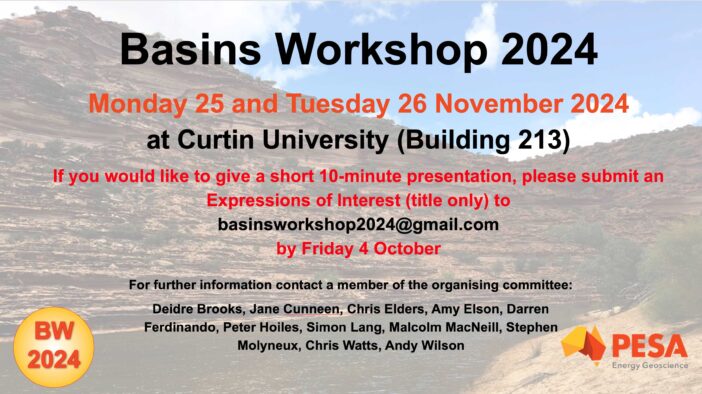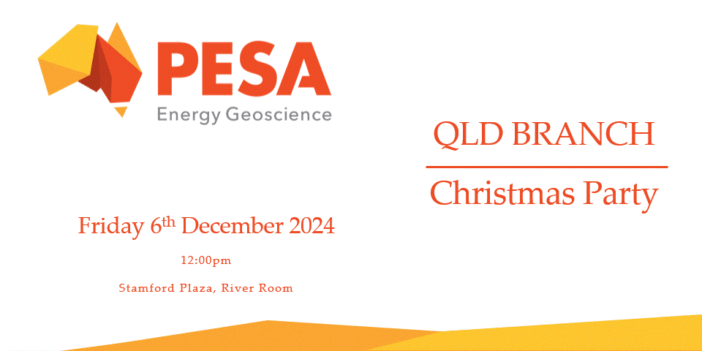
- This event has passed.
LIVE WEBINAR – Realistic and Theoretical 3D Modelling of the Sedimentation, Burial, Thermal and Tectonic History of the Gippsland Rift Basin
Tuesday, 8 February, 2022 @ 11:00 am - 12:00 pm (Australia/Perth time)
Free – $10.00
Kindly supported by Rock Flow dynamics 
This live webinar will take place at:
11am – Perth
12.30pm – Darwin
1pm – Brisbane
1:30pm – Adelaide
2pm – Canberra, Hobart, Melbourne, Sydney
Use the calendar link on this page to add this event in to your own calendar at the correct local time for your location.
Tickets are free for members (please log in to see this) and $10 for non members.
Please buy your tickets and immediately follow the link in the ticket e-mail (not the calendar invite or this webpage, which is just generic and not event specific) to set up your registration with the webinar software well in advance of the time of the talk. Once registered with the webinar software you will receive a reminder e-mail 1 hour beforehand.
Realistic and Theoretical 3D Modelling of the Sedimentation, Burial, Thermal and Tectonic History of the Gippsland Rift Basin
Presented by Xuemei Yang (Curtin University)
Abstract
Reconstruction of the history of sedimentary basins is important for better understanding basin evolution, land surface processes, climate change, environmental science and their geological applications in, for example, the water resources, minerals and petroleum industries. Two ways to investigate this are palaeo-landscape reconstruction and 3D burial and thermal history analysis. Reconstruction of the palaeo-landscape is a complicated process controlled and affected by multiple variables, including tectonics, palaeo-environment, sea-level change, rainfall, sediment erosion, transportation, deposition etc. 3D burial history analysis furnishes a picture of organic and petrological changes, which record the palaeo-thermal and pressure changes and are a window into the Pressure-Temperature-time history of the basin.
The project investigated the sedimentary, burial, thermal and tectonic history of the Gippsland rift basin, using a realistic 3D structural and stratigraphic model of the basin made in Petrel (Schlumberger) software, to constrain the theoretical deterministic models made in the Basin and Landscape Dynamics software (Badlands) and PetroMod (Schlumberger) software. An efficient Experimental Design approach was used to guide the scenario set-up for the numerical simulation software, process the numerical simulation results of the palaeo-landscapes, and generate the multivariate equations that define and identify the important controlling variables.
A full suite of 3D forward palaeo-landscape models of the Gippsland Basin was built to reconstruct the basin history from its formation (Early Cretaceous) to Recent in Badlands. The models are calibrated to the corresponding full 3D realistic model of the basin. The experimental design matrix generated 22 scenarios to fit 12 identified variables and test for possible interactions with each other. The most significant controlling variables are non-marine Erodibility, Rainfall, the Exponent m for (rainfall x Area) and Maximum % Marine Deposition. Sea Level, Critical Slope, slope exponent n and the Initial Topographic Map are important secondary variables. The palaeo-landscape reconstruction guided by the statistical experimental design helps generate a best fit model to Gippsland basin geological history, and the modelling results indicate several important insights.
The Gippsland basin 3D burial history is modelled using PetroMod constrained by the realistic 3D model, which ensure the burial history model is guided by empirical data. Analysis of the heat flow model and the fit with the Gippsland thermal history suggest two rift events that have affected different areas in the basin. In addition, the 3D burial history model highlights the sites of three potential mature source rocks intervals within the Latrobe Group spanning the Late Cretaceous to early Palaeocene within the Gippsland Basin.


